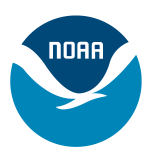- Industry: Government
- Number of terms: 30456
- Number of blossaries: 0
- Company Profile:
NOAA Coral Reef Conservation Program, National Oceanic and Atmospheric Administration, U.S. Department of Commerce
In taxonomy, the geographical (and, where relevant, stratigraphical) location of the occurrence of the population from which the type specimen (i.e. Holotype, lectotype or neotype) was taken.
Industry:Natural environment
Origin of a pollutant discharge from a discrete conveyance, such as an effluent from the end of a pipe.
Industry:Natural environment
The edge of the bank/shelf where depth increases rapidly into deep oceanic water.
Industry:Natural environment
The portion of an oocyte or egg that is opposite the animal pole and contains most of the yolk granules. See "animal pole".
Industry:Natural environment
That period of a year in which organisms are sexually active.
Industry:Natural environment
The marine component of the Global Biodiversity Information Facility. It links marine databases around the world to provide an internet accessible, dynamic interface for comparing species level, geo-referenced biodiversity data in relation to ocean habitats. All Census of Marine Life (coml) field project data will be managed in and accessible through OBIS (www.iobis.org).
Industry:Natural environment
A character, trait or structure that has evolved to a less developed state from its ancestral form or function.
Industry:Natural environment
A mass of cytoplasm containing several nuclei and enclosed in a membrane, but having no internal cell boundaries, e.g., skeletal muscle cells.
Industry:Natural environment
A statistical measure of central tendency. The middle-most value in a set of observations with an equal number of observations lying above and below the median value.
Industry:Natural environment
A widespread fungal infection of Caribbean soft corals. It affects six species of sea fans and sea whips. The pathogen is Aspergillosis sydowii, a terrestrial fungus which infects gorgonia after germination of spores on the coral surface. This is followed by penetration and spread of hyphae in coral tissue, resulting in highly visible lesions which may be associated with complete loss of tissue and skeleton. Lesions often occur at multiple sites across an infected colony.-Purple galls may be produced by the coral host to encapsulate fungal hyphae. For more information and illustrations, see: http://www.coral.noaa.gov/coral_disease/aspergillosis.shtml.
Industry:Natural environment
